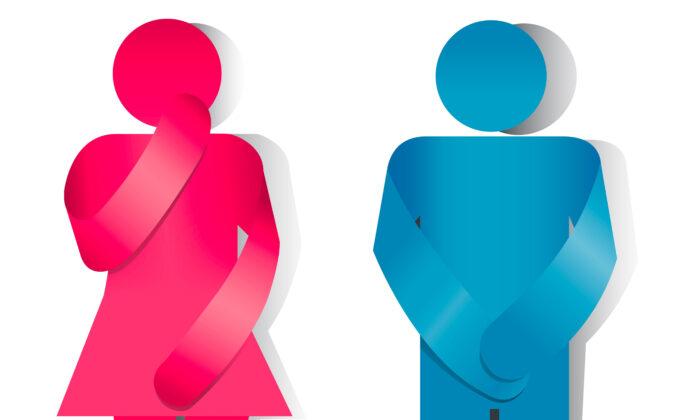Osteoporosis, a condition in which the integrity of bone is compromised by a breakdown in their structure, often resulting in fractures, that can be prevented and even reversed naturally, without the use of prescription medications. This often devastating disease, which most often affects postmenopausal women but is found in men as well, can respond well to lifestyle changes and supplementation. The sooner you incorporate these options into your life, the faster your bones will respond and improve.
Fifty percent of women have osteoporosis by age 60, and 20 percent of women will experience a hip fracture during her lifetime. Although osteoporosis is often thought of as a woman’s disease, 30 percent of cases occur in men, and 50 percent of men who suffer hip fractures die within one year of the incident.
What Causes Osteoporosis?
The main causes of osteoporosis include lack of sufficient physical exercise, aging, hormone imbalances, low or deficient vitamin D levels, emotional stress, long-term use of some medications (e.g., loop diuretics, heparin, antacids with aluminum, chemotherapy, methotrexate), and nutritional deficiencies, especially calcium and magnesium.It’s possible to effectively treat and even reverse bone loss by incorporating certain foods into your diet. In addition, it’s also a wise idea to avoid specific food and beverage items while also adding supplements as needed. Here are some ways to reverse osteoporosis naturally.
How to Reverse Osteoporosis Naturally
Cash in on vitamin K. Although vitamin K is often associated with helping blood clot, it also plays a key role in bone health and osteoporosis. According to a new (May 2017) report in
Metabolism, “several studies now support a critical function of vitamin K in improving bone health.” This vitamin is necessary to form a protein critical for the formation of bone.
The two forms of vitamin K you should know about are K1 and K2. Among the best food sources of vitamin K1 are green leafy vegetables followed by the cruciferous veggies (e.g., broccoli, Brussel sprouts, cabbage). Foods containing vitamin K2 include meat, fish, and fermented foods, including kefir, raw cheeses, and sauerkraut, and tempeh.
It is recommended you include several servings of foods from both the K1 and K2 group every day to help promote optimum bone health. If you need further vitamin K, consider a supplement. Dr. Josh Axe suggests taking 100 mcg of vitamin K2.
Feel good vibrations. In a
review of the literature, researchers found that vibration stimulates bone formation by increasing the level of testosterone and growth hormone, which in turn helps prevent osteoporosis. Numerous studies showed that vibration can also treat pain associated with osteoporosis as well as increase muscle strength, neuromuscular coordination, and balance.
One way to enjoy the benefits of vibration at home is to use a vibration platform or plate. Use of these devices for 5 to 20 minutes a day may improve bone density.
Avoid certain foods and beverages. Specific food and drink choices should be avoided or significantly limited because they have been shown to contribute to the development of osteoporosis. They include alcohol (which increases inflammation that can result in more calcium leaching out of the bones), sugar sweetened carbonated beverages (sugar increases inflammation and high phosphorus in soft drinks takes calcium from bones), caffeine (promotes bone loss), and processed or red meat (results in bone loss).
Count on calcium and vitamin D. Most people know that calcium is essential for strong bones, but it’s important to also get vitamin D in the picture. A
review of 53 trials showed that the combination of calcium and vitamin D was helpful in preventing hip or any type of fractures while vitamin D alone was not. Dr. Axe suggests taking 1,000 mg of calcium citrate (for best absorption) and 5,000 IU vitamin D3, which boosts absorption of calcium.
You also can get vitamin D from spending some quality time in the sun. Generally, 15 to 20 minutes of unprotected (no sunscreen) exposure to the sun three to four times a week is sufficient.
Don’t forget magnesium. For optimal metabolism of calcium, you need to get a sufficient amount of the mineral magnesium every day. A two-to-one ratio of calcium and magnesium is generally suggested, which means 500 mg magnesium daily. The forms that are best absorbed are magnesium citrate, chloride, and chelate. Foods rich in magnesium include green leafy vegetables, legumes, bananas, avocados, nuts, seeds, and whole grains.
The importance of magnesium in promoting and maintaining bone health and in preventing osteoporosis has been reported in many studies. One in
Nutrients, for example, reported that “tight control of magnesium homeostasis seems to be crucial for bone health” and that a deficiency of the mineral “contributes to osteoporosis directly by acting on crystal formation and on bone cells.”
Supplement with strontium. Stronium is a metallic element that the body absorbs and uses as if it were calcium, and thus it can help improve bone density. It is available in two forms: citrate and ranelate. The former is found in most supplements, especially in North America, while the latter is sold as a prescription drug in Australia and Europe.
Although most research has been done with strontium ranelate, reports on strontium citrate are available as well. In a one-year, double-blind, randomized control
trial, postmenopausal women with osteopenia (when bone density is low but not at the point of osteoporosis), women who took a combination of melatonin, strontium citrate, vitamin D3, and vitamin K2 (MSDK) showed a significant improvement in bone mineral density compared with women who took placebo.
Some calcium supplements also contain strontium citrate, but you also can take a strontium supplement on its own. Dr. Axe recommends consuming 680 mg daily.
Engage in weight training. It’s time to grab those dumbbells and start lifting. Similar to muscles, when bones are stressed (forced to bear more weight than they are used to during regular activity), they become stronger. You don’t need to join a gym (but you can if you desire); use of hand weights, weight machines, and elastic bands at home can do the trick if you practice with weights two to three times a week (some suggestions
can be found here).
It’s best to consult with a knowledgeable exercise trainer, healthcare professional, or physical therapist before you start a weight training program, especially if you have any health issues and/or are taking medication, or if you have not exercised for some time.
Castiglioni S et al. Magnesium and osteoporosis: current state of knowledge and future research directions.
Nutrients 2013 Aug; 5(8): 3022-33
Maria S et al. Melatonin-micronutrients Osteopenia Treatment Study (MOTS): a translational study assessing melatonin, strontium (citrate), vitamin D3 and vitamin K2 (MK7) on bone density, bone marker turnover and health related quality of life in postmenopausal osteopenic women following a one-year double-blind RCT and on osteoblast-osteoclast co-cultures.
Aging (Albany NY) 2017 Jan 26; 9(1): 256-85
Palermo A et al. Vitamin K and osteoporosis: Myth or reality?
Metabolism 2017 May; 70:57-71
Weber-Rajek M et al. Whole-body vibration exercise in postmenopausal osteoporosis.
Przeglad Menopauzalny 2016 Mar; 14(1): 41-47





